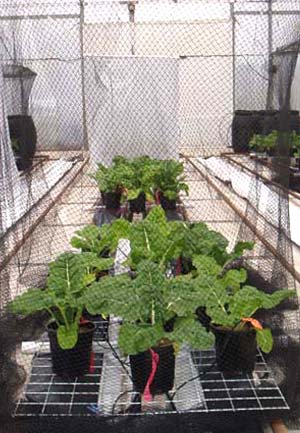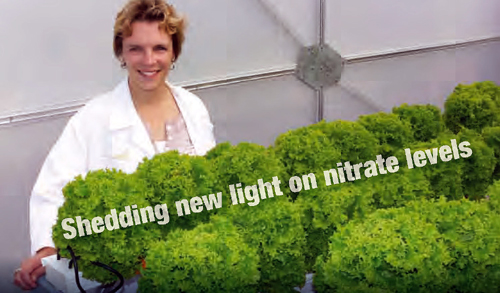|
|
The concentration of nitrate and nitrite in a vegetable reflects its food safety, quality and even how efficiently fertiliser was used in the production of that vegetable. Vegetables provide the majority of nitrate found in the diet. Leafy vegetables tend to have a higher nitrate concentration than other vegetable types such as root or fruit vegetables. Further, leafy vegetables can accumulate nitrate beyond levels that are optimum for plant growth. Once eaten, nitrate can be reduced to nitrite in the body and can combine with amines to form carcinogenic nitrosamines that are associated with gastric cancer. Public health concerns about high nitrate and nitrite in vegetables have led some countries to set limits on these compounds in vegetables. This project assessed the levels of nitrate and nitrite occurring in Australian produced leafy vegetables and the production factors that impact on these. A survey of leafy vegetables available on the market was conducted over a one-year period with vegetables obtained from different growing areas in New South Wales, Queensland and Victoria. Greenhouse experiments were then carried out at the NSW Department of Primary Industries Gosford Horticultural Institute investigating how light and nitrate fertiliser affect the concentration of nitrate in a range of leafy vegetables.
Key Findings :
Key Findings (cont):
SEE ALSO :
Acknowledgements : The project team wishes to thank and acknowledge the financial contribution and support of NSW Department of Primary Industries, Horticulture Australia Limited and AusVeg. We thank Lavinia Zirnsak of the Victorian Department of Primary Industries and Brad Giggins of Applied Horticultural Research for kindly organising vegetable samples from Victoria and Queensland for the project survey. We thank Mike Titley, also of Applied Horticultural Research, for providing samples during the development of the project and for providing us with valuable contacts. We thank Dr Bill Carlile (Nottingham Trent University, United Kingdom) and Dr Ray Cerkauskas (Agriculture and Agri-food Canada) for valuable discussions and information about nitrate nutrition physiology. Also, we would like to thank Dr Doris Blaesing (Serve-Ag Analytical Services, Tasmania) for a very helpful discussion on sap nitrate testing. We thank Sue Forster, Craig Hunt, Murali Samithamby and Glen Rangott of Diagnostic and Analytical Services, Wollongbar (NSW Department of Primary Industries), for assistance with method development and for sample analyses. This project has been facilitated by the New South Wales State Government and Horticulture Australia Limited (HAL) The Australian Government provides matched funding for all HALs R&D activities. |
||||||||
|


